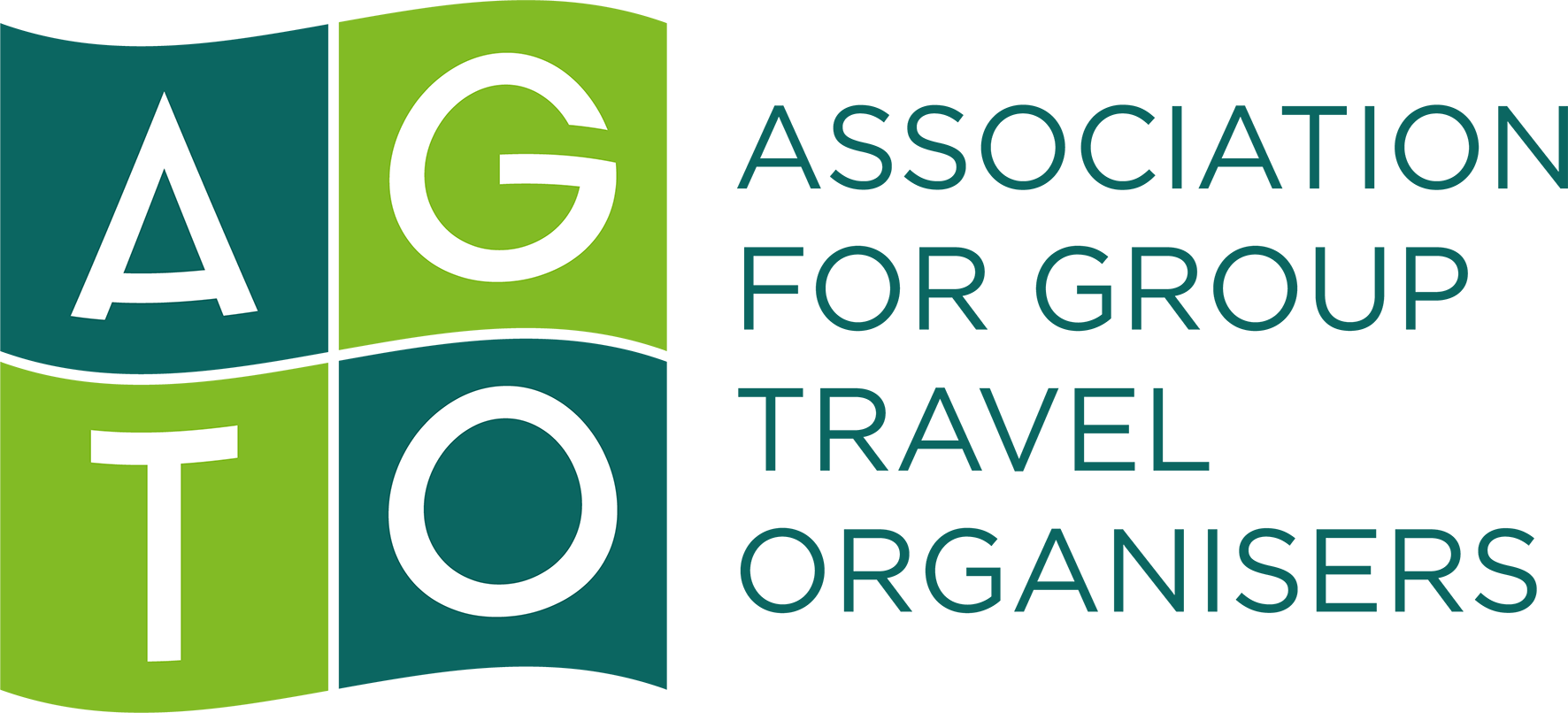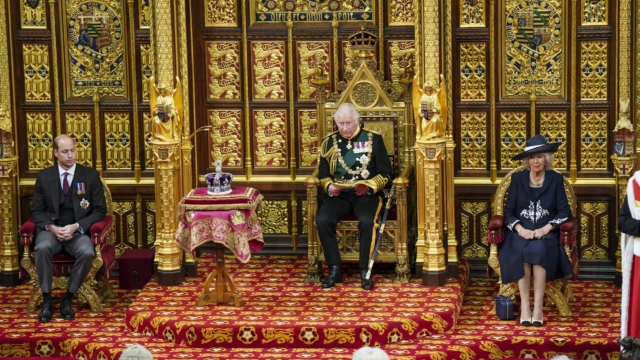Attached a copy of the lobby pack that supports the Queen’s speech. Here are some…
COVID-19 Update 31st March 2021
Embargoed until 00.01 – Wednesday, March 31, 2021
SUPPORT AND VISIT YOUR MUCH-LOVED ATTRACTIONS WHEN YOU CAN
– The 2020 annual Visitor figures are evidence that Attractions need continued support from the public and Government in 2021 –
As visitor attractions look to reopen across the UK in the next few months, the Association of Leading Visitor Attractions (ALVA) releases the visitor figures of its members for 2020 today (Wednesday, March 31, 2021), which saw a very strong start to the year, thanks to an increase in overseas visitors, but then a huge average decline of 66% throughout the UK following the outbreak of COVID-19. The total number of visits to ALVA sites in 2020 was 45.4million, representing an annual decline of 70% on the 151.3million for 2019 on the top 294 ALVA sites.
When the initial lockdown commenced all visitor attractions were closed, but by early summer the situation became far more nuanced, with outdoor sites able to reopen to the public earlier than was the case for indoor sites. Further restrictions often applied to individual nations or English regions rather than the entire UK, meaning that the impact of COVID-19 restrictions was decidedly uneven, with many ALVA members able to reopen while others were forced to remain closed.
Unlike previous years, not all the Top 10 most visited attractions were in London. The most visited attraction in the UK was Tate Modern with 1,431,704 visits. The Natural History Museum (South Kensington) moved up two places to 2nd with 1,296,763 visits and British Museum 3rd with 1,275,466 visits. For the first time, two gardens appeared in the Top 10 – Royal Botanic Gardens, Kew, which moved up 7 places to 4th with 1,226,289 visits and RHS Garden Wisley jumped 21 places into the 7th position with 993,516 visits. The most visited attraction outside London was Chester Zoo, which moved 8 places to 6th with 1,182,652 visits.
Significant increases were seen by some of the top 20 attractions and for the first time, the most visited attraction in Scotland was Royal Botanic Garden Edinburgh which moved up 20 places to 17th and saw 452,479 visits. Other notable increases in the top 20 reflected the important role some attractions have played in providing people with access to safe and well-managed outdoor spaces during the pandemic. Horniman Museum and Gardens leapt 29 places to 12th with 606,329 visits; ZSL Whipsnade Zoo rose 45 places to 13th to 550,046 visits; Longleat moved 20 places to 14th with 495,037, while Westonbirt, The National Arboretum (Forestry England) moved 51 places to 15th with 484,533 and Attingham Park (National Trust) was 16th after also moving 51 places, with 483,946. In Northern Ireland, Titanic Belfast remained the most visited attraction with 159,044 visits and Mount Stewart (National Trust) was the 2nd most visited moving up 46 places and welcoming 155,928 visits.
Also of note was Kew’s wild botanic garden, Wakehurst, in Sussex which moved up 86 places from 114 to 28 with 342,545 visits and Edinburgh Zoo who welcomed 335,625 visits and moved 35 places to 29th.
However, numbers were badly impacted by COVID-19 and showed how vulnerable and detrimentally affected the UK’s attractions were. Two notable examples that would normally be among the most visited attractions were Royal Museums Greenwich which saw a 96% decline, with 111,263 visits and moved from 9th to 130th place on the table. Edinburgh Castle, which is normally the most-visited paid for attraction in Scotland saw an 87% drop to 276,950 visits and went down 31 places to 44th.
Bernard Donoghue, Director of ALVA, commented: “Our annual figures for 2020 reflect what a devastatingly hard year the Attractions sector and the wider visitor economy faced. Tourism is the UK’s 5th biggest industry and, as these figures show, was hit first, hit hardest and will take the longest to recover.”
“As we approach Easter, one of the economically important times for our members, we continue to question the Government’s decision to open non-essential retail but not indoor attractions, who will also miss the May Bank Holiday as well. In the past 14 months, most of our members have been closed for every Bank Holiday, and therefore we continue to ask the Government to introduce a new Bank Holiday for 2021 at the end of September to thank the NHS and key workers and help the tourism industry repair our balance sheets.
“In the Budget, earlier this month, we welcomed the fact that the Chancellor recognised several of our requests including an extension to the Furlough Scheme and keeping VAT at 5% until the end of September, and we ask him to keep an open mind on further extending that rate for as long as necessary.
“Although many of our members are still physically closed, they have been digitally open. Via innovative ‘virtual’ activities, our members have continued to inspire, teach us and remain at the forefront of our minds whether it be through downloadable jigsaws, behind-the-scene tours or bedtime stories with Zoo Keepers. When the attractions were open, they were open with much reduced capacity and the public’s feedback was that they were not only COVID-safe but the visitor experience was superb. This will continue when they reopen in April, May and June – so we urge you to visit them – whether they are in the city or in the country, you are likely to never see them so quiet again and be able to get so close to wonderful art, animals and performances. Our museums and galleries, historic houses and gardens, cathedrals and palaces, castles and zoos, safari parks and heritage sites, theme parks and churches need your support more than ever before.”
Edinburgh Zoo and Highland Wildlife Park are now open; Hampton Court is already welcoming people into their gardens and will host its first ever Tulip Festival (April 17 – May 3); Beaulieu have opened their grounds and gardens to local visitors and St Paul’s Cathedral re-opened for public worship at the weekend. Today, Waddesdon will open their gardens more widely and the Easter Beano Festival celebrating 70 years of Dennis with a ‘Big Bonanza’ full of jokes, mischief and pranks opens at Royal Botanic Gardens, Kew until April 18.
Looking to the re-opening, ALVA’s members have some wonderful plans in place. Depending on reaching the targets outlined in the government roadmap, many other attractions will begin to open from April onwards. Royal Museums Greenwich will open the grounds of the Queen’s House and the National Maritime Museum on April 12 to connect with local visitors and offer family activities as will Old Royal Naval College, Greenwich with outdoor guided tours provided by volunteers or with any of the three free self-guided tours. Beamish, The Living Museum of the North also plans to reopen its outdoor areas from April 12. The Globe will be opening for guided tours from April 13 and the Scottish National Gallery of Modern Art (Modern Two) will welcome visitors back to experience the Ray Harryhausen: Titan of Cinema exhibition from April 26. The British Library intends to reopen their Reading Rooms as soon as possible after April 12 and their galleries after May 17, which will include the landmark Unfinished Business exhibition on the fight for women’s rights.
Both starting on May 1 at Royal Botanic Gardens, Kew is the Summer Secret World of Plants Festival, which will invite visitors to explore plants via large-scale, immersive ‘plantscapes’ representing diverse UK habitats and interactive art installations until September 19 and the Naturally Brilliant Colour art exhibition – until September 12. An UK-exclusive exhibition on the joyful history of nightclub design will reopen V&A Dundee on May 1. Night Fever: Designing Club Culture is the first large-scale examination of the relationship between club culture and design, charting the evolution of nightclubs from the 1960s to today. Royal Museums Greenwich will open on May 17 as will the Barbican with an exhibition celebrating French artist Jean Dubuffet; Warner Bros. Studio Tour London – The Making of Harry Potter are anticipating reopening on May 17 with A Celebration of Slytherin; as will the British Museum with an exhibition devoted to Thomas Becket – murder and the making of a saint and Windsor Castle. National Museums Liverpool is hoping to open on May 17 with John Moores Painting Prize at Walker Art Gallery, AI: More than Human at World Museum and The Last Bohemian: Augustus John at Lady Lever Art Gallery. The rest of Beaulieu (including the National Motor Museum, World of Top Gear and Palace House) as well as the RAF Museum London and RAF Museum Cosford and the Roman Baths will also be reopening their doors to visitors on May 17. Royal Opera House will once again open its doors to audiences on May 17 with a packed schedule of in-person performances from both The Royal Ballet and The Royal Opera, and also on that day Exposure: Lives at Sea, a contemporary photography exhibition of the myriad ways that we interact with the sea, reopens at Royal Museums Greenwich. Also on May 17, Blenheim Palace is set to open its doors to visitors again with two major new exhibitions as part of a £1.9m investment programme, as well as a new photography exhibition showcasing iconic images by renowned photographer Cecil Beaton. The Eden Project is also planning to reopen on that day and so is the London Transport Museum with its award-wining Hidden London exhibition extended by popular demand and new dates for its popular Museum After Dark evenings. Brunel’s SS Great Britain is set to re-open fully from May 17, with visitors able to step aboard the world’s first great ocean liner as well as visit two museums, the historic dry dock and dockyard.
May 18 sees The Fitzwilliam open with two new temporary exhibitions: The Human Touch: Making Art Leaving Traces until August 1, and Scent from Nature: Beauty’s botanical origins’ containing some of the earliest examples of botanical illustration until August 29 The Royal Academy intends to reopen on the 18th too with Tracey Emin/Edvard Munch: The Loneliness of the Soul until August 1; Michael Armitage: Paradise Edict opening from May 22 and David Hockney: The Arrival of Spring, Normandy, 2020 opening from May 23. Tower of London will open on the 19th as will the Museum of London and the Museum of London Docklands and Waddesdon plan to re-open their exhibition, Nick Knight: Roses from my Garden that day. At the National Gallery, there will be several exhibitions that closed just after opening including Sensing the Unseen: Step in Gossaert’s Adoration and Rosalind Nashishibi: An Overflow of Passion and Sentiment, which have been extended until June. Conversations with God: Jan Matejko’s Copernicus will open on May 21 and is the first time that the National Gallery has exhibited a painting by a Polish artist. The Natural History Museum is planning to open as soon as the relevant restrictions are lifted with three temporary exhibitions: Fantastic Beasts: The Wonder of Nature, Wildlife Photographer of the Year and a brand new display exploring humanity’s impact and relationship with the natural world – Our Broken Planet: How We Got Here and Ways to Fix It. Tudors to Windsors: British Royal Portraits opens at Royal Museums Greenwich from May 28 to October 31. In partnership with the National Portrait Gallery, London, this exhibition displays the courtly commissions of some of the best artists from the past five hundred years. Also in May, the fifth RHS Garden, RHS Garden Bridgewater in Salford, Greater Manchester, will open creating 154 acres of world-class horticulture within one of the UK’s largest urban conurbations. Suring May, St Paul’s Cathedral will open for sightseeing and they are also offering a programme of online and in-person events for the Grinling Gibbons 300th anniversary: Creation, Craft and Creativity. The Wallace Collection hopes to open at the end of May, following the completion of capital works, with Rubens: Reuniting the Great Landscapes. This spring will also see Chester Zoo unveil a brand new bird habitat Latin American Wetland Aviary. The extraordinary new aviary offers an immersive walkthrough experience, where visitors can see some of the world’s most precious bird species. The Science Museum Group museums will all open as soon as the relevant restrictions are lifted with temporary exhibition highlights for the year including Trans-Siberian: The World’s Longest Railway (National Railway Museum and Science Museum), Railway Heroes (Locomotion, National Railway Museum), In Pursuit of Perfection: The Yorkshire Photographic Union Competition (National Science and Media Museum), Our Future Planet (Science Museum), Top Secret: from ciphers to cyber security (in the new £5million Special Exhibitions Gallery at the Science and Industry Museum), plus the reopening of the IMAX cinemas in London and Bradford with Antarctica 3D. The V&A will open with Epic Iran which explores 5,000 years of Iranian art, design and culture (until September 12); Alice: Curiouser and Curiouser will celebrate one of the most iconic, imaginative and inspiring stories of all time. Offering an immersive and fantastical journey down the rabbit hole, the V&A invites visitors to delve into the origins, adaptations and reinventions of Alice in Wonderland over 158 years, charting the book’s evolution from manuscript to a global phenomenon beloved by all ages (until December 31) and Bags: Inside Out reopens; the UK’s most comprehensive exhibition dedicated to the ultimate accessory. From designer handbags to despatch boxes, vanity cases to military rucksacks, the exhibition explores our longstanding fascination with the bag (until September 12). The V&A’s Raphael Court – home to the Raphael Cartoons – will reopen following a nine-month refurbishment to mark the 500th anniversary of Raphael’s death. The refreshed gallery and its new interpretive approach will transform the way museum visitors experience the Cartoons, lent to the V&A from the Royal Collection by Her Majesty The Queen.
The London Design Biennale will take place at Somerset House, from June 1 and will take over the entire site. It is a global gathering of the world’s most ambitious and imaginative designers who have all responded to Artistic Director Es Devlin’s chosen theme of Resonance in their incredible installations and presentations. One such will be Es Devlin’s very own ‘Forest of Change’, that will take over the courtyard and features a forest of 400 trees, which visitors can explore inside and learn about the UN’s global goals for sustainable development, a plan to eradicate poverty, fight inequality and tackle the climate crisis. Kensington Palace will reopen in June and Beaulieu has a busy calendar of socially-distanced events starting with a Simply Electric rally on May 23, followed by a summer sculpture exhibition, Sculpture at Beaulieu, from June 19.
In July, Royal Albert Hall will be back with full capacity performances and Royal Opera House will be part of the Covent Garden Family Trail, and from July 9 – September 12, Wakehurst’s major new summer programme Summer of Sound features six striking large-scale sound installations from award-winning artists including Kathy Hinde and Marco Barotti, offering visitors immersive and mindful moments across its spectacular wild landscape. At the end of the month, on July 23, late night opening will start again at the Roman Baths with their popular prosecco bar allowing visitors to enjoy a drink by torchlight, round the Great Bath. This Summer, the Royal Shakespeare Company will stage a production of The Comedy of Errors in the Garden Theatre, a specially constructed outdoor theatre located on the banks of the River Avon in Stratford-upon-Avon and Chester Zoo will have a sustainability spectacular Love it for Longer, where they will turn the world of waste on its head by looking at all of the waste we produce and thinking differently about it.
The Royal Academy’s rescheduled Summer Exhibition 2021 is planned to start in September and exhibition Late Constable in October. Later this year in October Royal Botanic Gardens, Kew’s first Japan Festival will take place inside the Temperate House from October 2-31. Chester Zoo’s wintertime event The Lanterns will return towards the end of the year. Longleat is launching its own brand of exclusive rural retreats at a selection of historic properties on its Wiltshire estate. Among the properties are Keeper’s House and Keeper’s Cottage, where guests will have the added excitement of being able to watch the inhabitants of the East African reserve wandering past their window, with far-reaching views over the famous Safari Park. In the autumn, Elizabeth and Mary: Royal Cousins, Rival Queens will open at the British Library, this is the first major exhibition to consider Queen Elizabeth I and Mary Queen of Scots together and will showcase original correspondence between the iconic rulers.
For further information on ALVA and to download images,
please visit www.alva.org.uk
Twitter @alva_uk
For further Press Information and to arrange interviews, please contact
Rachel Aked
Tel: 07790 732448
NOTES TO EDITORS:
ALVA’s Members are the UK’s most popular, iconic and important museums, galleries, palaces, castles, cathedrals, zoos, historic houses, heritage sites, gardens and leisure attractions. The 74 ALVA members manage some nearly 2,200 tourist sites and welcome over 119 million domestic and overseas visitors each year; some 28% of the visits made annually in the United Kingdom.


